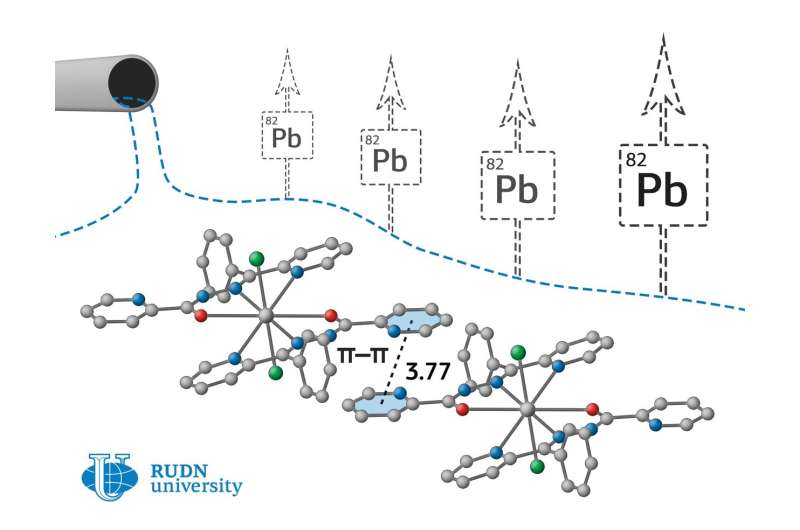Chemists propose new reagents for the removal of lead from wastewater

RUDN University chemists together with colleagues from other countries have synthesized new compounds that effectively bind lead ions and can be used to remove it from wastewater and even from living organisms—that is, to play the role of an antidote for lead poisoning. The article is published in the journal Crystals.
Complex compounds of lead are widely used for the synthesis of polymers and compounds necessary for the production of semiconductors, materials for nonlinear optics and ferroelectrics. The large radius of the divalent lead ion Pb (II) allows you to change the number of bound atoms, ions or molecules (ligands) from four to nine. Thus, it is possible to obtain a wide range of substances based on lead that combine organic and inorganic components in a single molecule. The widespread use of lead compounds in production leads to the accumulation of toxic waste, creating the problem of removing lead from wastewater.
Fedor Zubkov, an employee of the Organic Chemistry Department of RUDN University, together with colleagues from Iran, Spain, Italy and Croatia have obtained compounds that can bind lead in wastewater as well as in the bodies of living organisms. Chemists have created it on the basis of nicotinic and picolinic acids hydrazides. Nitrate, chloride and perchlorate anions serve as counterions to positively charged lead ions and stabilize the complex due to strong electrostatic interactions.
To study the obtained complexes, chemists had to design a special device for the synthesis and simultaneous selective crystallization of reaction products. To do this, an alcohol solution of a mixture of lead nitrate (II), the corresponding ligand, and sodium perchlorate was placed in the main part of the tube as a donor of counterions. The mixture was heated at 60 degrees C so that the side branch of the tube, also filled with alcohol, remained at room temperature. After the crystals of the complex formed in the side vessel over several days of synthesis, they were filtered, washed with ether and dried in air. The yield of the metal complex ranged from 67 to 87 percent of the theoretically possible.
According to X-ray diffraction analysis, one of the complexes turned out to be binuclear, that is, it contains two lead ions bound by a common ligand. Using computer simulations, it was shown that all complexes form supramolecular ensembles with different types of intermolecular interactions. In the formation of such structures, anions of inorganic acids play an important role, which experiences a strong electrostatic attraction to the internal coordination sphere of the lead complex. As a result, metal organic coordination polymers (metal organic frameworks, MOFs) are formed, which are promising metal organic catalysts and selective acceptors of heavy-metal ions.
The resulting substances—supramolecular ensembles—bind and precipitate even trace amounts of lead in wastewater. They can be used for drinking water treatment and even as an antidote for lead poisoning.
More information: undefined Mahmoudi et al. Supramolecular Assemblies in Pb(II) Complexes with Hydrazido-Based Ligands, Crystals (2019). DOI: 10.3390/cryst9060323
Provided by RUDN University





















